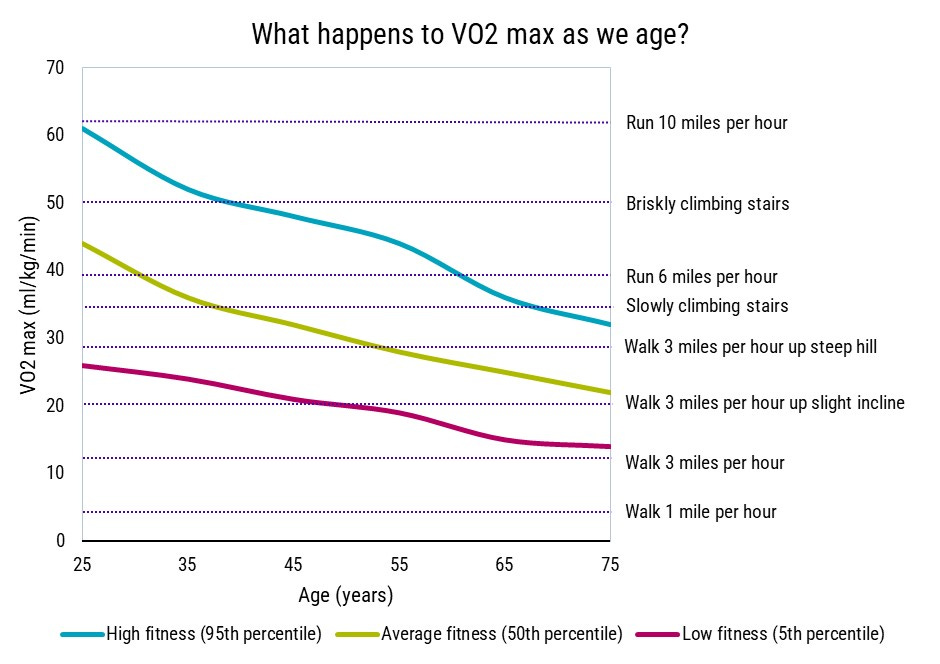Stayin' alive
VO2 max is widely regarded as one of the best indicators of aerobic fitness. VO2 max measures the maximum amount of oxygen an individual can utilize during physical exercise, expressed in milliliters per kilogram per minute. Individuals with higher VO2 max levels benefit from a more efficient supply of blood from the heart and lungs to the muscles, allowing their muscles to effectively extract oxygen from the blood. Beyond its importance in athletic performance, VO2 max is a critical indicator of future health and longevity. For instance, a sedentary 25-year-old can have the same VO2 max as a 65-year-old with average fitness. As we age, our physical fitness declines, and everyday tasks such as climbing stairs or walking up a slight incline require a greater percentage of VO2 max. For example, briskly climbing stairs without breaks is still possible for a 75-year-old with high fitness but might not be feasible for a 65-year-old with average fitness. Incorporating moderate-intensity physical activity and muscle-strengthening exercises in line with WHO recommendations is key to increasing VO2 max and enhancing one’s ability to live independently in old age. However, 31% of adults globally currently do not meet WHO recommended activity levels, a figure that is five percentage points higher than in 2010.
For further insights into health trends, please see our Healthy Living strategy’s related article: From food and fitness to AI and new drugs positive trends are emerging in health
Source: Jayson Gifford, Assistant Professor in Exercise Physiology, Brigham Young University, based on ACSM’s Guidelines for Exercise Testing and Prescription, 10th edition




